Cold smoking might sound like an advanced technique, but at its heart it’s very simple. Instead of cooking food with heat, you use smoke at low temperatures to add flavour and help preserve. Think of it as seasoning with smoke rather than fire.
What is Cold Smoking?
Cold smoking is a way of exposing food to smoke without raising the temperature high enough to cook it. The process usually takes place between 20–30°C (68–86°F). Unlike hot smoking, which both cooks and smokes food at the same time, cold smoking is purely about adding flavour while keeping food raw or cured.
What Foods Can Be Cold Smoked?
Cold smoking works best with foods that are already safe to eat or have been preserved first. Cheese is one of the most popular options, but fish such as salmon or trout, cured meats like bacon and ham, and even nuts, salt, butter, and oils all take on an incredible character when exposed to cool smoke.
The Key Steps to Cold Smoking
The foundation of safe cold smoking is starting with the right food. Meat and fish must be cured beforehand to prevent bacteria from developing, while cheese, nuts, or salt can go straight in.
You’ll also need a steady source of smoke that doesn’t generate heat. A cold smoke generator that burns wood dust slowly is ideal. This keeps the temperature stable while producing clean, consistent smoke.
Temperature control is critical. Staying below 30°C is essential, otherwise cheese will melt and proteins may begin to cook. Many people find it easiest to smoke in the early morning or evening when the air is naturally cooler. Good airflow is just as important — stale smoke can make food bitter, so a well-ventilated BBQ, cabinet smoker, or even a simple ventilated box will do the job.
Smoking times vary depending on the food. Cheese usually takes two to four hours, salmon may need six to twelve, and bacon often requires twelve to twenty-four spread over several sessions. Once the smoke is done, wrap the food and let it rest in the fridge for a day or more to allow the flavours to mellow and balance out.
Safety First
Cold smoking has a few important rules. Never cold smoke fresh meat or fish without curing it first. Only use hardwoods such as oak, beech, apple, or cherry, and avoid anything treated or resinous. Finally, always monitor the temperature with a thermometer to ensure it stays under 30°C.
Why Try Cold Smoking?
The appeal of cold smoking is how accessible it is. Once you have a smoke generator, almost any BBQ with a lid becomes a cold smoker. It’s inexpensive, easy to master, and opens up a world of flavours — turning everyday foods like cheddar or table salt into gourmet delicacies.
Equipment You’ll Need
The equipment list is short and simple. A BBQ or smoker with a lid is enough to trap and circulate the smoke. A maze-style or spiral cold smoke generator filled with wood dust will produce the cool smoke you need. For those who want a more dedicated setup, cabinet smokers like the Masterbuilt 710 Digital Smoker or Masterbuilt 230S are excellent choices, offering multiple racks, tight seals, and easy temperature management.
A reliable thermometer will help you keep conditions under control, and quality wood dust is essential for clean, consistent smoke. Our Hot Smoked wood dust range — available in oak, hickory, beech, apple and more — is kiln-dried for a dependable burn and a flavour you can trust.
The Bottom Line
Cold smoking isn’t complicated. With the right setup and a little care, anyone can master it. Start simple with cheese, move on to fish or bacon once you’re confident, and you’ll soon discover why this age-old technique remains one of the most rewarding ways to transform food.
